A Spirited Soul Mate: The Magic of the Redbone Coonhound Dog!
Introduction and breed background
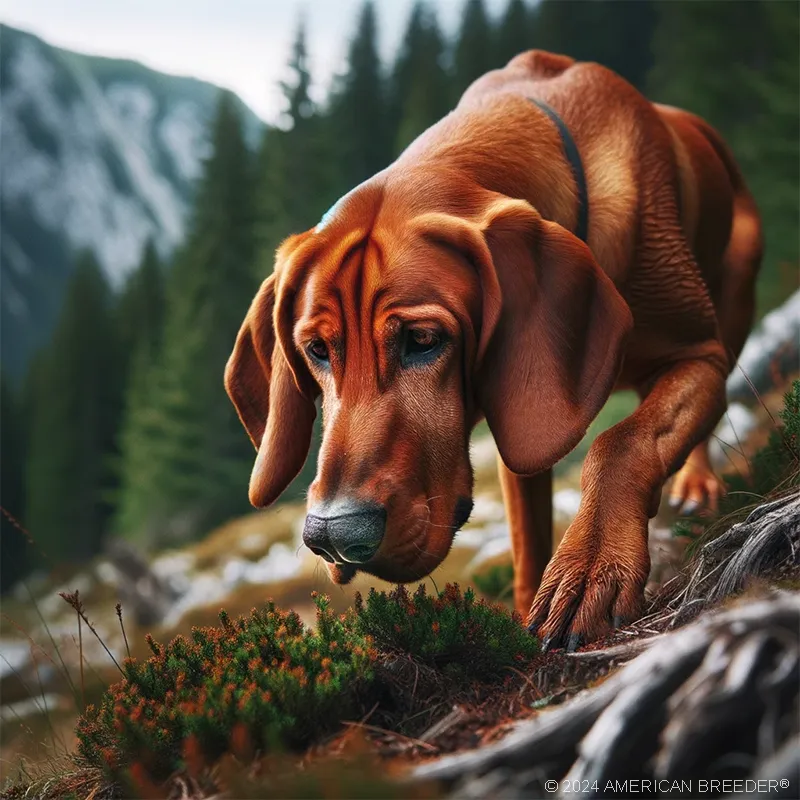 The Redbone Coonhound Dog is a delightful and spirited breed known for its striking appearance and unwavering loyalty. Before embarking on the journey of bringing home this lively companion, it's crucial to understand their unique traits and requirements. With its captivating red coat and keen hunting skills, the Redbone Coonhound Dog is ready to charm its way into your heart!
The Redbone Coonhound Dog is a delightful and spirited breed known for its striking appearance and unwavering loyalty. Before embarking on the journey of bringing home this lively companion, it's crucial to understand their unique traits and requirements. With its captivating red coat and keen hunting skills, the Redbone Coonhound Dog is ready to charm its way into your heart!
Considerations to understand before choosing this breed:
Their energetic nature makes them ideal for active individuals and families who love outdoor adventures. Redbone Coonhounds thrive on human companionship and may suffer from separation anxiety if left alone for extended periods.They requires regular exercise and mental stimulation to keep them happy and balanced.
Interesting and Fun Facts:
The Redbone Coonhound Dog is sometimes referred to as the "Redbone" or "Red" Coonhound and has a melodious howl, which is often compared to the sound of a musical instrument. Coonhounds were originally bred to hunt raccoons, but they are also skilled at tracking other game such as bears and mountain lions.
Breed Background and History
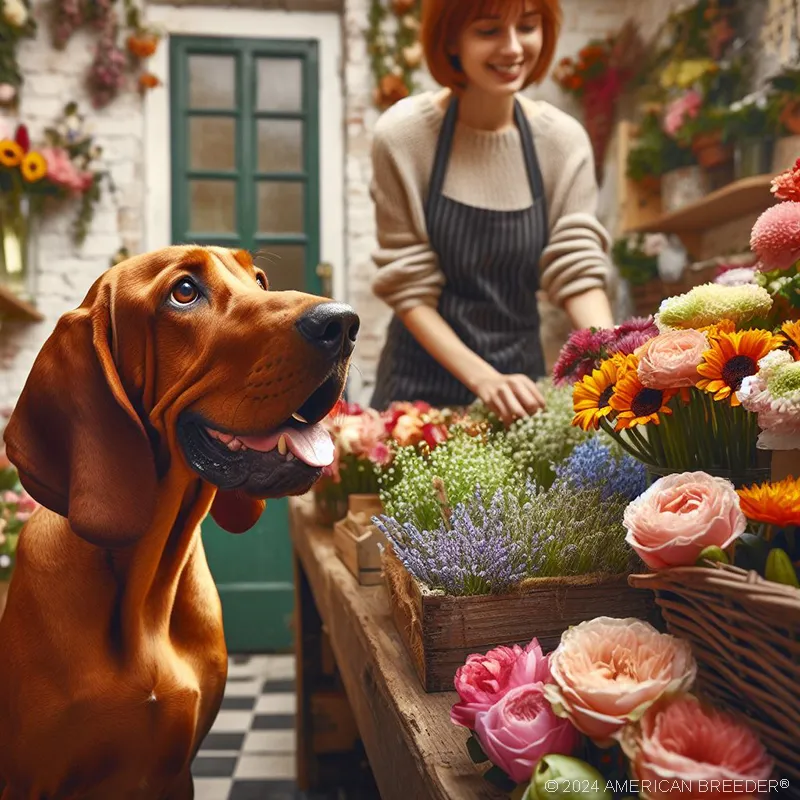 Origin and development of the breed:
Origin and development of the breed:
The Redbone Coonhound Dog's roots can be traced back to early American settlers who bred hounds with European bloodlines, including Irish and Scottish Foxhounds, Bloodhounds, and possibly even Irish Setters. The breed's name comes from its distinctive red coat color and was officially recognized by the American Kennel Club (AKC) in 2009.
Historical significance or cultural relevance:
Redbone Coonhounds played a vital role in American history as trusted hunting companions and trackers. Their excellent sense of smell and determination made them indispensable for hunters and trappers in the rugged terrains of the United States.
Purpose or original use of the breed:
Originally bred for hunting raccoons, the Redbone Coonhound Dog excels at tracking and trailing game through challenging environments. They are tenacious hunters, pursuing their quarry with relentless energy.
Appearance:
Size, weight, Activity level, and physical appearance
Redbone Coonhounds are medium to large-sized dogs, with males weighing between 50 to 70 pounds and females slightly lighter at 45 to 70 pounds. They stand around 21 to 27 inches tall at the shoulder, exuding an athletic and robust appearance.
Coat type, color variations, and patterns
The breed's striking coat is short, dense, and sleek, providing excellent protection during outdoor excursions. As the name suggests, Redbone Coonhounds come in a lustrous red color, often with a sleek black nose and dark eyes.
Distinctive features or markings
Their expressive eyes and long, floppy ears are distinctive features that enhance their appeal. Redbone Coonhounds also have a gracefully arched neck and a well-balanced body, giving them an elegant gait.
Average litter size for this breed
Typically, a Redbone Coonhound litter consists of 6 to 8 puppies, ensuring there's plenty of puppy love to go around!
Temperament and Personality
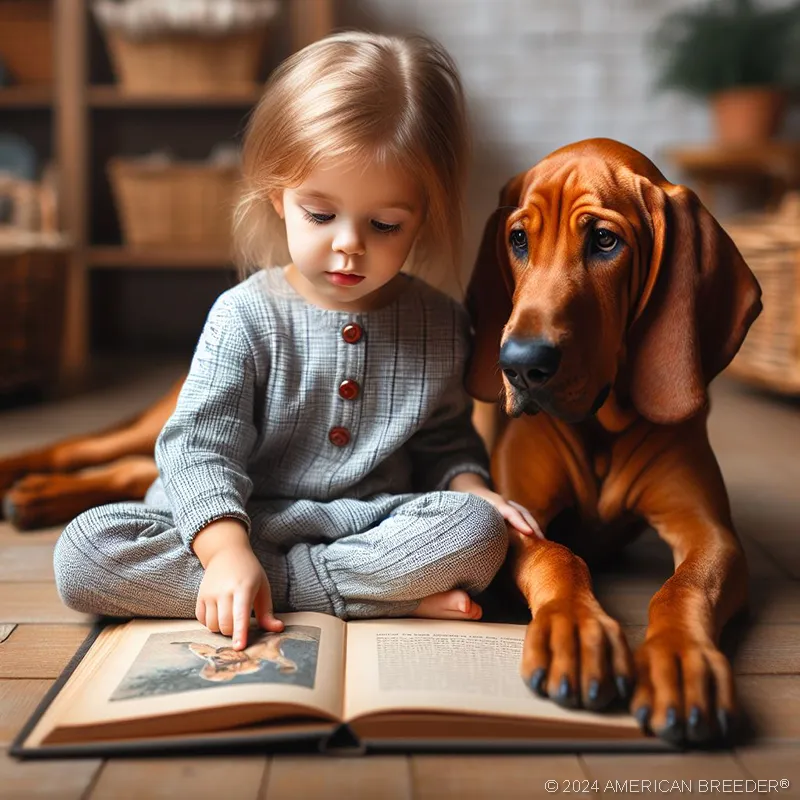 Typical temperament traits and behavior tendencies
Typical temperament traits and behavior tendencies
Redbone Coonhounds are known for their friendly and affectionate nature. They are social dogs that form strong bonds with their human family and are usually good with children. Their gentle demeanor and even temperament make them an excellent choice for families.
Energy levels and activity requirements
These dogs have high energy levels and need regular exercise to stay happy and healthy. Daily walks, playtime, and engaging activities like scent games or agility training will keep them mentally stimulated and physically fit.
Compatibility with different lifestyles and family dynamics
The Redbone Coonhound Dog is adaptable and can thrive in various living situations, provided they receive enough exercise and companionship. They are a perfect fit for active families, outdoor enthusiasts, and those seeking a loyal and loving four-legged friend.
List Typical Behavior Issues
While Redbone Coonhounds are generally well-behaved, there are some behavior issues that can arise, including:
Separation anxiety
Due to their affectionate nature, they may become anxious when left alone for long periods.
Excessive barking: Coonhounds are vocal by nature and may bark when they sense something unusual or exciting.
Resource guarding: Like many dogs, they may exhibit territorial behavior if not properly trained and socialized from an early age.
Trainability and Intelligence
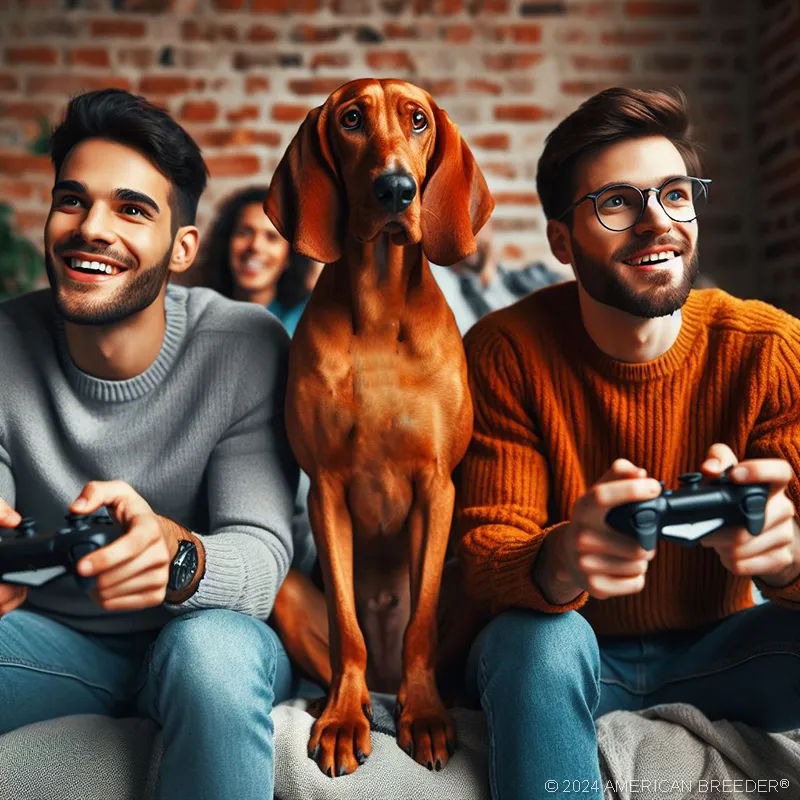 Trainability level and ease of learning
Trainability level and ease of learning
Redbone Coonhounds are intelligent dogs with a strong desire to please their owners. While they have an independent streak, positive reinforcement training methods, patience, and consistency will yield successful results.
Intelligence and problem-solving abilities
These hounds are known for their problem-solving skills and astute intelligence. They excel in activities that challenge their minds and senses, such as tracking, scent work, and obedience trials.
Recommended training approaches and techniques
Positive reinforcement training, using treats, praise, and rewards, is highly effective with this breed. Harsh training methods should be avoided, as they can lead to fear or anxiety in this sensitive and loyal dog.
What type of training or skill is this type of breed best suited for?
Redbone Coonhounds are natural-born hunters and excel in activities that tap into their keen sense of smell and athleticism. They shine in canine sports like agility, tracking, and scent work. Additionally, their loving nature makes them ideal candidates for therapy and service dog training.
Practical Considerations
Size of sleeping quarters depending on size
Provide a comfortable and spacious bed, large enough for the Redbone Coonhound to stretch out and relax.
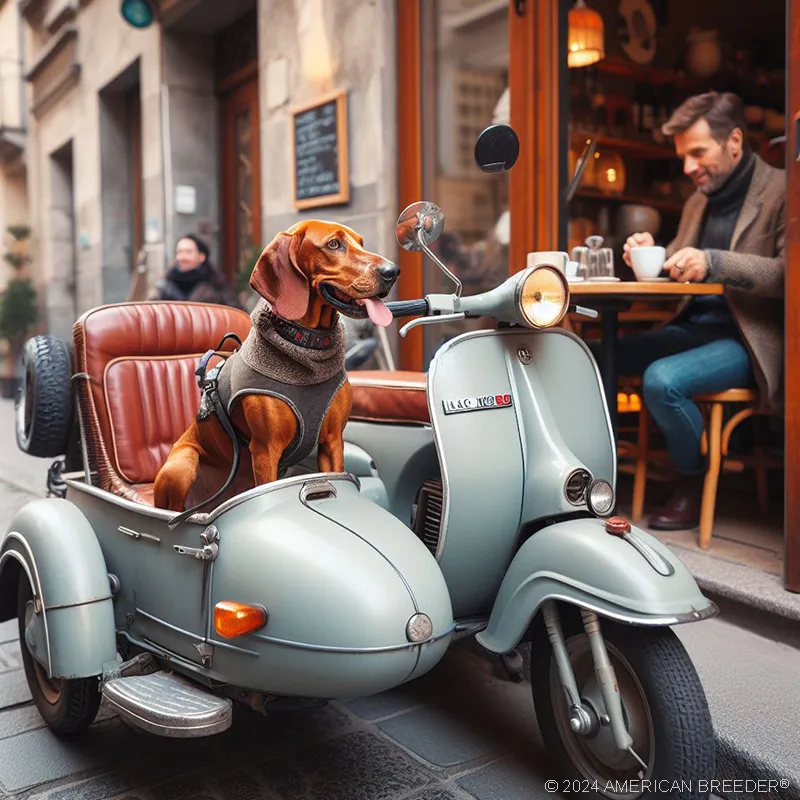 Typical annual veterinary cost
Typical annual veterinary cost
Budget for regular check-ups, vaccinations, and preventive treatments to ensure their well-being.
Type of grooming and annual cost
The breed's short coat is low-maintenance, requiring only regular brushing to keep it looking sleek and healthy.
Daily Exercise needs and requirements
Redbone Coonhounds have high energy levels and need at least 60 minutes of exercise daily to stay content. Engage them in activities like long walks, running, or play sessions in a secure and fenced yard.
Level of Playfulness
These dogs are exuberantly playful, especially when interacting with their human family.
Level of intelligence
Redbone Coonhounds are highly intelligent and capable of learning complex commands and tasks.
Desired attention and affection
They are affectionate dogs that thrive on human companionship and crave attention from their family members.
Friendliness toward Strangers
Redbone Coonhounds are usually friendly toward strangers, but early socialization is essential to ensure they remain well-mannered in various situations.
Health and Care
Common health issues or predispositions of the breed:
While generally healthy, Redbone Coonhounds may be prone to hip dysplasia, ear infections (due to their floppy ears), and bloat. Regular veterinary check-ups can help detect and address any health concerns early on.
 Allergies and specific dietary considerations
Allergies and specific dietary considerations
Some individuals may have food allergies, so it's important to provide a balanced diet and monitor any adverse reactions.
Lifespan and longevity expectations
On average, Redbone Coonhounds have a lifespan of 11 to 12 years when properly cared for.
Grooming requirements based on coat type and size
The Redbone Coonhound's short coat is relatively low-maintenance, requiring only regular brushing to remove loose hair and keep it shiny. They are moderate shedders, so weekly brushing will suffice to keep their coat in good condition. Additionally, regular ear cleaning is essential to prevent infections, given their floppy ears that can trap moisture and debris.
Physical and mental stimulation
Being a hunting breed, Redbone Coonhounds have a strong need for physical and mental stimulation. Engaging them in activities that tap into their natural instincts, such as scent work, tracking, and agility, will keep them mentally sharp and fulfilled. Long walks, hikes, and interactive play sessions in a secure environment are vital to burn off their abundant energy.
Nutrition and feeding guidelines
To maintain their health and vitality, Redbone Coonhounds require a balanced diet rich in high-quality protein and essential nutrients. Consult with your veterinarian to determine the appropriate portion sizes and feeding frequency based on their age, weight, and activity level. Providing fresh water at all times is crucial to keep them hydrated, especially after energetic play sessions.
Socialization and Compatibility
Interaction with children, other pets, and strangers Redbone Coonhounds are generally friendly and get along well with children and other pets when properly socialized from an early age. They enjoy human companionship and thrive in a loving and inclusive family environment.
Redbone Coonhounds are generally friendly and get along well with children and other pets when properly socialized from an early age. They enjoy human companionship and thrive in a loving and inclusive family environment.
Socialization needs and tips for proper socialization
Early socialization is vital to help Redbone Coonhounds develop into well-adjusted and confident adults. Expose them to various people, places, and experiences to build their confidence and prevent any shyness or fearfulness.
Precautions or considerations for multi-dog households
Redbone Coonhounds can coexist harmoniously with other dogs, particularly if introduced to them at a young age. However, as with any breed, proper introductions and monitoring of interactions are essential to ensure a peaceful cohabitation.
List level of ease when it comes to training this type of dog breed
Redbone Coonhounds are intelligent and eager to please, making them relatively easy to train. Positive reinforcement methods, coupled with patience and consistency, will yield excellent results. However, their independent streak may require some extra perseverance in certain cases.
Living Arrangements and Environment
Suitability for different living arrangements (apartment, house, rural area)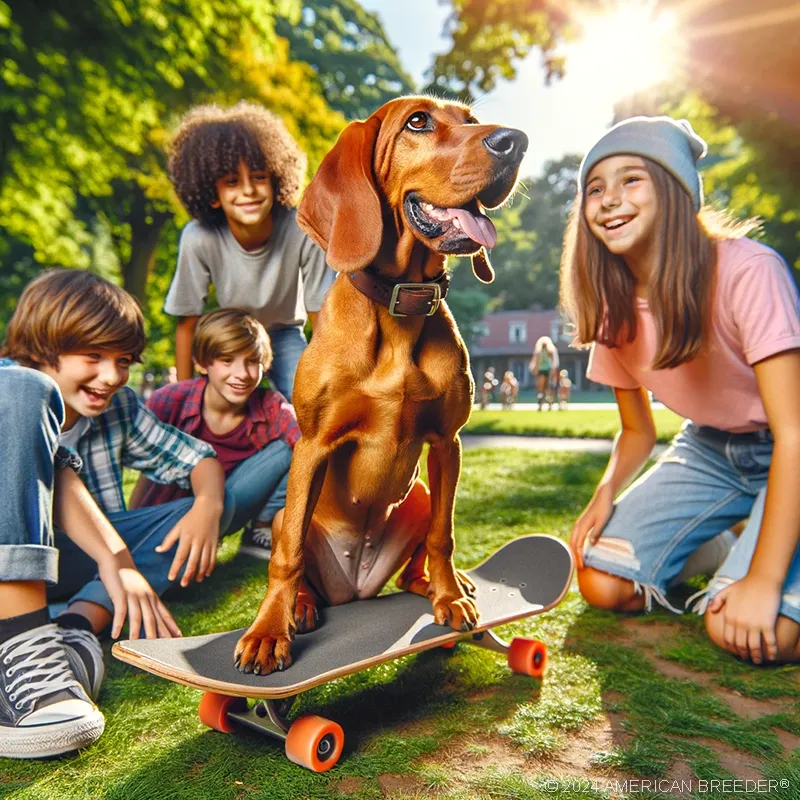 While Redbone Coonhounds can adapt to apartment living if given sufficient exercise, they thrive in houses with access to a secure yard where they can explore and play freely. Rural areas with ample space and outdoor activities are especially appealing to this breed.
While Redbone Coonhounds can adapt to apartment living if given sufficient exercise, they thrive in houses with access to a secure yard where they can explore and play freely. Rural areas with ample space and outdoor activities are especially appealing to this breed.
Space requirements and exercise options for the breed
Due to their active nature, Redbone Coonhounds benefit from living in a space where they have room to roam and engage in regular exercise. A secure, fenced yard allows them to burn off energy safely.
Climate considerations and adaptability
These hounds are adaptable to various climates, but their short coat makes them more comfortable in moderate temperatures. During extreme weather conditions, ensure they have access to shade, water, and appropriate shelter.
How big of a yard should a person have with this type of dog?
An adequately sized yard with ample space for play and exploration is ideal for a Redbone Coonhound. A securely fenced yard will allow them to safely indulge in their love for outdoor adventures.
Training and Obedience
Basic obedience training and commands
Basic obedience training should include commands like sit, stay, come, and walking politely on a leash. Establishing a strong foundation of obedience will make day-to-day interactions more manageable.
Advanced training or specialized activities suited for the breed
Redbone Coonhounds excel in advanced training activities like scent work, tracking, and agility. Engaging them in these specialized activities will stimulate their minds and keep them focused and happy.
Behavioral challenges or specific training considerations
Redbone Coonhounds can be strong-willed and independent, which may require additional patience and positive reinforcement during training sessions. Consistency and rewarding desired behaviors will help overcome any challenges.
Financial Planning
What is the typical price range for purchasing this dog breed from a reputable breeder?
The cost of a Redbone Coonhound puppy from a reputable breeder can range from $800 to $1500, depending on factors such as lineage, health clearances, and geographical location.
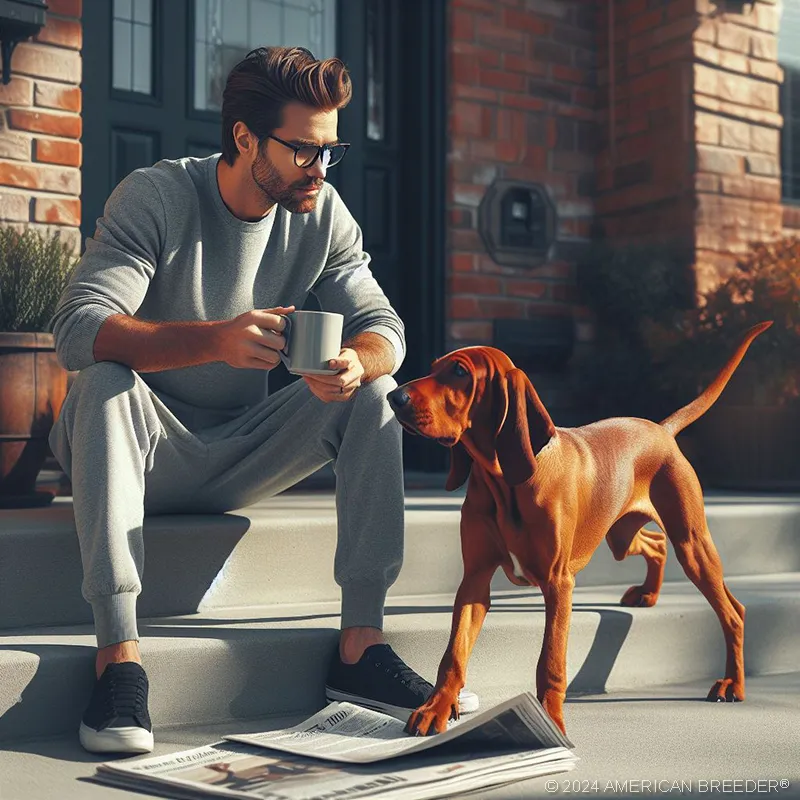 Initial costs (adoption fees or purchase price, vaccinations, spaying/neutering, microchipping)
Initial costs (adoption fees or purchase price, vaccinations, spaying/neutering, microchipping)
The initial expenses for bringing home a Redbone Coonhound puppy include the purchase price or adoption fee, which may vary. Additionally, there will be costs for vaccinations, spaying/neutering (if not done by the breeder), and microchipping.
Ongoing expenses (food, grooming, veterinary care, training, toys, and supplies)
The ongoing expenses for a Redbone Coonhound include high-quality dog food, regular grooming supplies, routine veterinary care, training classes, and various toys and supplies to keep them entertained and comfortable.
Overall summary
The Redbone Coonhound Dog is a vivacious and devoted companion that will bring joy and adventure into your life. With its striking appearance and friendly demeanor, this breed is a perfect fit for active individuals and families seeking a loyal and loving four-legged friend. Redbone Coonhounds thrive on human companionship and require regular exercise to keep them happy and well-adjusted.
The breed's intelligence and problem-solving abilities make them adept at various activities, including scent work, tracking, and agility. Engaging them in these activities not only keeps them physically fit but also nurtures their mental stimulation.
Remember, responsible ownership is paramount when bringing a Redbone Coonhound into your life. Whether you choose to adopt from a shelter or select a reputable breeder, ensure the well-being and happiness of your new furry friend.
So, if you're ready to unleash the magic of the Redbone Coonhound Dog in your life, get ready for a lifelong bond filled with love, laughter, and unforgettable adventures!
Conclusion
As you embark on this exciting journey to welcome a Redbone Coonhound into your family, remember that you are not just bringing home a pet; you are gaining a loyal and devoted companion for life. The Redbone Coonhound Dog's enchanting spirit and boundless energy will keep you on your toes and warm your heart.
Before you bring your new furry friend home, take the time to prepare your living space and lifestyle for this lively breed. Ensure you have a secure, fenced yard for them to explore, as well as plenty of time for outdoor activities and play. A tired and contented Redbone Coonhound is a happy one!
Remember that this breed thrives on human companionship, so be ready to shower them with love, attention, and affection. As social animals, they adore spending time with their family and will gladly join in on your adventures, whether it's hiking through the woods or simply lounging on the couch.
Training your Redbone Coonhound is an opportunity to strengthen your bond and build trust. With their intelligence and willingness to please, positive reinforcement training is the way to go. Patience, consistency, and rewards will help them blossom into well-behaved and well-rounded members of your family.
When it comes to activities, consider tapping into their innate hunting instincts by engaging in scent work or tracking games. These challenges will keep their minds sharp and their tails wagging with delight.
Now, imagine waking up to the melodious howl of your Redbone Coonhound, eager to embark on another day of shared adventures. Picture the joyous reunions after a day apart and the warmth of their affectionate nuzzles. With a Redbone Coonhound by your side, every day will be filled with laughter and love.
So, if you're looking for a spirited soul mate to join you on life's journey, the Redbone Coonhound Dog is the breed for you. Unleash the magic of this enchanting companion and cherish the bond that will last a lifetime.
In conclusion, as you prepare to welcome a Redbone Coonhound into your life, remember to embrace the responsibilities of pet ownership with love, care, and commitment. They will reward you with unwavering loyalty, boundless affection, and endless entertainment. Seek expert guidance from trainers and veterinarians to ensure your new furry friend's well-being, and cherish every moment of the beautiful journey that awaits you with this extraordinary canine wonder!
Now, go forth and embark on this thrilling adventure with your Redbone Coonhound Dog, and let the joy of canine companionship fill your heart and soul! Woof-tastic times await!
Redbone Coonhound Dog Quick Reference Guide
Breed Background: Origin: United States | Breed Purpose: Hunting raccoons and other game | AKC Class: Hound Group | Year Recognized by AKC: 2009
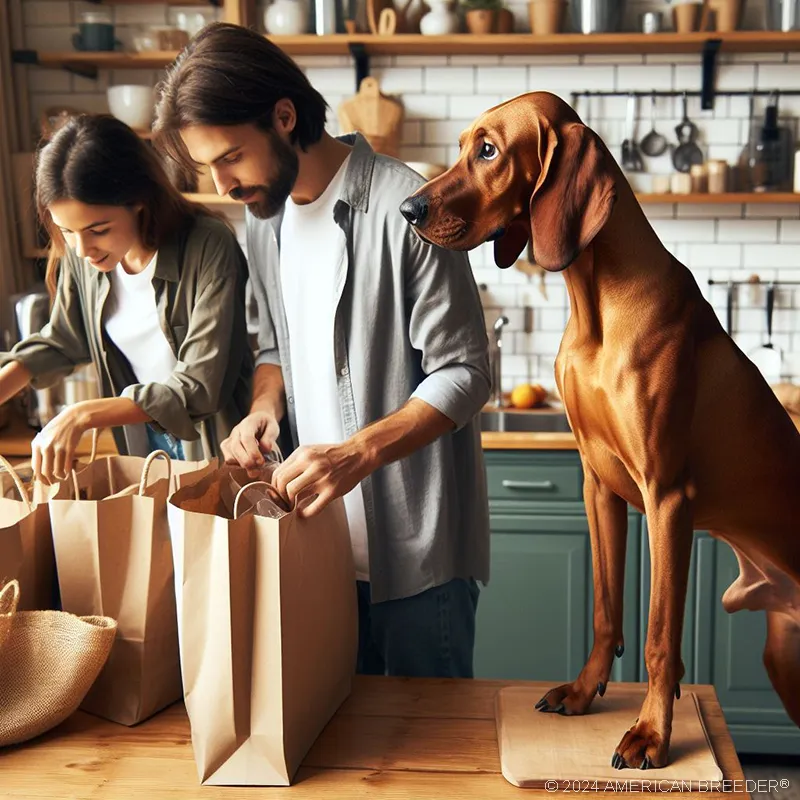 Appearance: Size: Medium to Large | Weight: 45-70 pounds | Coat Type: Short, smooth, and glossy | Colors & Patterns: Solid red | Distinctive Features: Sleek, muscular build, and a deep, melodious bay.
Appearance: Size: Medium to Large | Weight: 45-70 pounds | Coat Type: Short, smooth, and glossy | Colors & Patterns: Solid red | Distinctive Features: Sleek, muscular build, and a deep, melodious bay.
Temperament: Energy Level: 4 | Friendliness to Pets: 4 | Friendliness to Strangers: 4 | Trainability: 3 | Playfulness: 4 | Frequent Barker: 4 | Chase Instincts: 5 | Sense of Smell: 5 | Drive to Hunt: 5
Health & Care: Health Issues: Generally healthy, but may be prone to hip dysplasia | Lifespan: 11-12 years | Grooming Difficulty: Low | Exercise Needs: High
Socialization: Interaction with Children: Good with children, gentle and friendly | Interaction with Pets: Good, but early socialization is essential | Interaction with Strangers: Friendly and outgoing | Ease of Training: Moderately easy, may be stubborn at times
Suitable Living Arrangements: Apartment: Not ideal, needs space to roam | House: Yes | Rural Area: Preferred | Yard Size Requirements: Medium to large yard
Training & Obedience: Trainability: 3 | Intelligence: 3 | Obedience: 3 | Problem-Solving: 3 | Easily Stimulated: 4 | Focus Level: 3 | Easily Distracted: 3
Financial Planning: Typical Price Range: $800 - $1,200 | Initial Expenses: Includes vaccinations, crate, and basic supplies | Ongoing Annual Expenses: Food, grooming, and veterinary care
Breeding:
Reproductive Maturity: 6-12 months | Litter Frequency: Once a year | Litter Size: 6-10 puppies | Stud Cost: $500 - $1,000 | Breeding Challenges: Finding suitable mates may require effort
Did You Enjoy this Article? Share it and Help Us Spread the Word!
If you found this article helpful, we'd appreciate it if you could share it with your friends or link to it from your website, blog, or group! You can also use the convenient social share tabs on the left side of the screen to instantly share this page to your social media feed. For more ways to support and promote the American Breeder Community, visit our Share & Promote Together page for social media posts and memes you can copy and share. Your support means the world to us!
Disclaimer: The information provided in this article is for general informational purposes only and does not constitute legal, medical, financial, or professional advice. While we strive for accuracy, we make no representations or warranties regarding the completeness, accuracy, reliability, or suitability of the information. Please consult with a professional before making decisions based on the content provided. American Breeder Inc. assumes no responsibility for any errors or omissions or for the results obtained from the use of this information.
